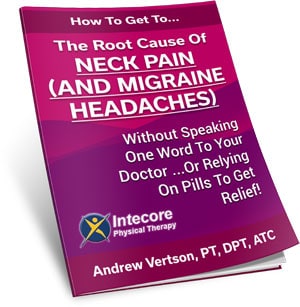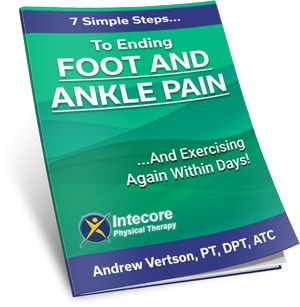 Back pain affects millions of people in America, with chronic pain affecting up to 35% of adults. Pain not only interferes with your daily activities but can negatively impact your mental health and overall quality of life.
Back pain affects millions of people in America, with chronic pain affecting up to 35% of adults. Pain not only interferes with your daily activities but can negatively impact your mental health and overall quality of life.
The good news is that natural remedies are available, so you don’t have to resort to pain pills, injections, or surgery to find relief. One of those options is a lumbar support brace.
If you get lower back pain while just going about your day-to-day activities, a lumbar support brace might be what you need to relieve the pain.
So, if you’re suffering from chronic back pain that affects your quality of life, you might consider adding a lumbar support brace to reduce pain and tenderness and help you continue exercising and maintaining a healthy lifestyle.
This type of device can help you manage your symptoms, but how do they work?
And are they right for you?
In this post, we explain how lumbar support braces work and what the benefits are, so you can decide whether getting one could improve your quality of life.
We cover the features, the benefits, and why they make an excellent choice for some people.
More Blogs From Intecore
Can High-Intensity Workouts Be Good For Overall Health?
How Can I Improve My Posture During Everyday Activities?
Shoulder Injuries That You Should Be Aware Of
What Are Lumbar Support Braces?
And What Are The Benefits?
Lumbar support braces are specially designed belts or harnesses that support and stabilize the lower back region.
They are typically made of flexible fabrics and may include additional padding or straps for improved comfort and adjustability.
They’re widely available online and have grown in popularity as a non-invasive treatment option for conditions such as lower back pain, strains, and sprains.
But how do they work?
By gently compressing the lower back, these braces can help alleviate pressure on your spine and reduce the discomfort that can accompany movement.
Some people also use them preventatively when they engage in activities that can strain the lower back, such as heavy lifting or prolonged sitting or standing. Overall, lumbar support braces offer an accessible.
Overall, lumbar support braces offer an accessible, inexpensive, and effective way to care for your back health. But it probably won’t surprise you to hear us say they’re not the full story – they don’t replace regular physical therapy.
They can’t fix the underlying root cause of lower back pain. But they can reduce the symptoms and are a helpful complement to physical therapy.
Types of Lumbar Support Braces
Back pain can be a real struggle for many people. But lumbar support braces can help alleviate some of this pain. Various types of lumbar support braces are available on the market, each designed to provide a different level of support.
For instance, some braces are more rigid and compressive, which can be helpful if you have more severe back pain.
Whereas other braces are made with more flexible materials that allow for a broader range of movement while offering good support.
So, no matter what your needs are, there’s probably a lumbar support brace available that can provide the temporary relief you’re looking for.
Is A Lumbar Support Brace Right For you?
If you experience lower back pain regularly, you might want to consider wearing a lumbar support brace.
However, it’s not just for people with chronic back pain. You might also want to consider one if you have to sit for long periods at work or perform heavy lifts at the gym.
Why? Because lumbar support braces help stabilize your lower back by providing extra support to the spine, alleviating pain, and reducing your risk of a more severe injury.
It’s important to note that you shouldn’t wear a lumbar support brace all day and night or expect to magically fix lower back pain overnight.
Instead, you should combine wearing one for short periods with other treatments such as stretching, exercise, and physical therapy.
But if you are looking for a way to prevent back pain or just support your lower back during physical activity, lumbar support braces can be helpful.
How To Choose The Right Lumbar Support Brace
Getting the right fit:
When it comes to finding the right fit, it’s all about the numbers. Measuring yourself or the item you intend to wear is crucial in ensuring a comfortable fit.
To measure yourself:
Start with a flexible tape measure and get a friend to assist you.
Always measure barefoot and wear form-fitting clothing.
Pay attention to the size chart and consider your measurements, such as bust, waist, and hip circumference.
Remember, the right fit is all about feeling comfortable – with the right compression level for your needs.
Don’t get hung up on the size label, as it can vary among brands. Concentrate on the measurements.
Different styles and designs of lumbar support braces:
Lumbar support braces tackle back pain and support the lower back. Choosing the perfect one can be difficult with many styles and designs available. Some braces cater to specific conditions, like herniated discs.
Others offer a universal fit for mild to moderate back pain. Consult your physical therapist for advice on which one suits your condition before purchasing.
The brace’s material and adjustability also play a crucial role in determining which one to choose.
But regardless of the style and design you choose, a lumbar support brace can help to make movement more comfortable, which is great news.
How to Wear a Lumbar Support Brace Properly
It’s important to understand how to properly wear the brace with comfort and good posture since wearing it improperly can end up causing additional pain or strain.
Ultimately, lumbar support braces are essential in promoting good posture and helping reduce pain in the back and spine.
Multiple styles and designs are available, from elastic lumbar corsets to magnet support belts, so you can find the one that most suits your body type.
So, a lumbar support brace can be an effective tool for managing and preventing back pain.
But it’s even more important to wear it properly for maximum benefit. Otherwise, you might as well not bother.
So, first, make sure you choose the correct size. The brace should fit snuggly but not feel too tight or uncomfortable.
Before putting it on, take a few deep breaths and stretch your back muscles.
Next, fasten the brace tightly around your waist and center it over your lower back. Then adjust the straps as needed to achieve a comfortable fit.
Wear the brace for the recommended time each day, and take it off when you no longer need it, such as at the end of your workday.
How To Eliminate Back Pain (For Good)
Back pain can have many causes. But poor posture and a sedentary lifestyle can all be significant contributors.
These factors lead to muscle strain, spinal misalignment, and weakened core muscles, leading to pain and discomfort, which lumbar support braces provide limited help.
But these devices don’t remove the need for proper physical therapy to identify and fix the root cause.
The exercises and stretching routines we use help prevent and alleviate back pain for good help you strengthen your lower back muscles, improve your flexibility, and reduce the lower back pain that is negatively affecting your life.
Our treatment sessions also use various hands-on therapy techniques like massage and spinal joint manipulation to reduce muscle tension, increase blood flow and promote total-body relaxation and healing.
The Intecore Physical Therapy clinics in Foothill Ranch, Aliso Viejo, Orange, and San Juan Capistrano are perfect for you if you don’t like relying on pain pills and prefer to treat your lower back pain the natural way.
We can help you end the pain and stiffness, get back to staying active, and able to focus on enjoying life again.
Unfortunately, just strapping on a lumbar support brace, hoping for the best, and ignoring back pain can lead to further complications and exacerbate the underlying condition causing your pain.
So, before you do that, we would encourage you to book a free consultation with us to determine what is causing your back pain and let us create an individualized treatment plan to fix it.
You can also book a free telephone consultation with one of our expert physical therapists if you can’t attend the clinic. We provide valuable advice over the telephone instead.
Meanwhile, please click here to get some help right now and access our free 10-page report on natural back pain relief, written by our founder – and specialist physical therapist, Andrew Vertson.
It includes 13 ways to relieve back pain naturally to help make things a little easier for you, from simple lifestyle changes to targeted exercises.
No more relying on medications or invasive procedures. With this report, you can find relief by making a few small adjustments to your daily routine.
- 7 Ways to Get Rid of Tension Headaches Naturally - July 1, 2025
- Why Are My Feet Swollen? Common Causes Explained - June 2, 2025
- What Is Restless Leg Syndrome? Symptoms, Causes, and Relief Options - May 5, 2025
















